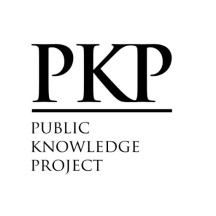Inability to stabilize a patient who is in hemorrhagic shock can eventually result in death
Abstract
PPH, a leading cause of maternal mortality, causes an estimated 140,000 deaths each year globally - this roughly corresponds to one woman dying every 4 minutes. In addition, serious morbidity may follow PPH in the form of various sequels.11, 12 Massive PPH is associated with a worse prognosis. Inability to stabilize a patient who is in hemorrhagic shock can eventually result in death.11 The incidence of PPH in this audit was 0.77% of all deliveries in 2019 at DHQ Hospital Rawalpindi, Pakistan. This figure is certainly comparable to that reported in studies conducted at AKUH, Karachi which was 0.64%.11 However other population-based studies where the incidence of massive PPH has been reported to be as high as 1.1%.13,14 The prevalence of postpartum hemorrhage (PPH) (blood loss ≥500 ml) ranged from 7.2% in Oceania to 25.7% in Africa. The prevalence of severe PPH (blood loss ≥1000 ml) was highest in Africa at 5.1% and the lowest in Asia at 1.9%.12 In a recent review, PPH was also found to have an increasing trend in the more developed parts of the world.15 The exact reasons for this rise remain unclear.
In the current study increased incidence of PPH was recorded among non booked patients. The larger percentage of non booked women who had PPH in this study confirmed the importance of quality antenatal care in early recognition of risk and control of complications associated with pregnancy. The age range of presentation at our institution was 22–42 years. Incidence of PPH was reported in similar age group in other studies.15,16
Multiparas showed an increased incidence of PPH in our study. A study was done in Nigeria by A.E.Olowokere also had more incidences in multiparas.13 Whereas in studies conducted by Lill Trine et al and Michael Kramer showed increased incidence in primiparas.14,15 The NICE guideline on intrapartum care identified eight cross-sectional studies assessing parity as a risk factor for PPH and recommended that grand multiparas (parity 4 or more) should be advised to give birth in an obstetric unit where more emergency treatment options are available.16 The majority of patients had spontaneous labor followed by augmentation of labor and delivery by cesarean section. Similar results were presented in studies by A.E.Olowokere and Lill Trine et al,13,14 whereas others showed increased risk with cesarean section and augmentation of labor.15 A study conducted in Uganda c-section was a risk factor for PPH.17 Major risk factors identified were high parity, anemia, macrosomia with or without polyhydramnios and antepartum hemorrhage followed by preeclampsia, chorioamnionitis, and malpresentation. Anemia remained a major risk factor in many of the studies followed by the history of PPH in a previous pregnancy, preeclampsia, and increased fetal weight.18-20









